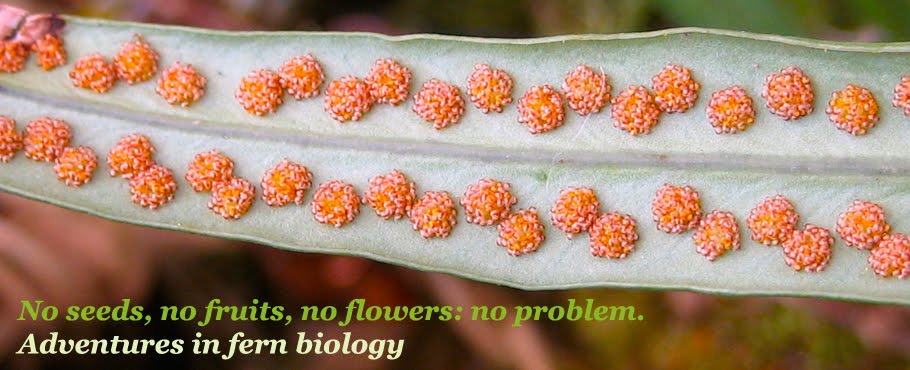Another toothy or spinulose Polystichum, P. munitum, or Sword Fern, was without question the dominant fern species I encountered on this trip. I found this fern everywhere I went, from the forests north of Vancouver to plantings on the UBC campus to parks in Seattle. It seems to be the single most abundant fern in this part of the northwest, and it grows huge and lush. There's something about Polystichum munitum, too, that seems to turn whatever space you're walking through into a scene out of Jurassic Park. Look closely at the first picture and tell me you can't imagine a little Compsognathus peeking out from behind one of those huge basket-shaped P. munitums...
Wednesday, August 13, 2008
Polystichum andersonii
One of several Polystichums I saw on this trip, P. andersonii made rare but lovely appearances in Vancouver and Washington. This genus is characterized by its spiny-ness (botanical term: spinulose), which you can clearly see here and in the next set of pictures of a related species...
Thelypteris qualpaertensis
I decided to start the fern role-call with this species, a new one for me, mostly because it's got a cool name: T. qualpaertensis. The etymology of scientific names is a hobby of mine, but here I'm stumped. I have no idea what it means, as my Botanical Latin book is back home in Wisconsin while I'm here in DC. T. qualpaertensis looks like most Thelypterises I've come across, and I was particularly enchanted by its sori, which looked to me like little blackberries.
Vancouver and Beyond
This post serves as a (very brief) introduction to the types of habitats and plants I saw out there, and I'll follow it up with several entries about specific ferns I encountered.
The pictures above are from a fern foray that took place Saturday, July 27th, to the Lower Seymour Conservation Area and Mount Seymour, north of Vancouver. There are usually several field trips on the weekend preceding the Botany conference each year, and the fern ones are always the most fun (of course). On this trip we visited typical conifer forest at the Conservation area, and as you can see, there were tons of ferns. The ones most prominent in these photos are Athyrium filix-femina (Western Lady Fern) and Blechnum spicant. I'm bad at trees, so I don't know the species that were present, but suffice to say there were lots of them, and they were BIG.
The forest was pretty rich and dense with plant life, including mosses that were draped over many of the branches. Surprisingly, despite the lush coverage of ferns, the fern flora was fairly depauperate (meaning number of species, not abundance of plants). Earlier this summer I was able to locate 15 fern species on just two or three acres at my parents' home, while my list topped out at around 10 species for this incredible forest. It's likely that there just aren't a ton of ferns able to cope with the relatively low water availability imposed by the long winters in this area of the world.
Subscribe to:
Comments (Atom)













